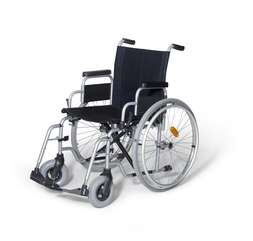|
Fall 2017, Vol. 2

 The Oklahoma Health Care Authority (OHCA) has called a special board
meeting for Dec. 1 to recommend that the agency delay and reduce provider rate
reductions which were approved on Nov. 9, 2017, and scheduled to go into effect Dec. 1, 2017.
The agency received $22.8 million when Governor Mary Fallin
approved sections of the appropriations bill on November 17. These funds will
allow the agency to postpone and reduce the provider rate reductions until January 1.
In
anticipation of the agency’s $70 million reduction to its appropriation due to
the loss of the smoking cessation fee and in order to submit a balanced budget,
the OHCA has already taken several budget balancing actions. First, the agency developed
several program changes to be implemented in SFY18 that produced savings of approximately
$3.2 million for SFY18. In addition, $4.65 million in 2017 general revenue was
returned to the agency in 2018. The agency had $12 million in carryover from SFY17
to use. These combined savings equate to
approximately $19.85 million.
On November 9, the OHCA board approved across-the-board provider rate reductions of 9
percent and 4 percent for nursing facilities as well as eliminating Medicare
crossover coinsurance and deductible payments for nursing facilities to be
effective December 1. These actions were taken to help cover the remainder of the $70
million base reduction.
However,
with the receipt of the $22.8 million, the agency has scheduled a State Plan
Amendment Rate Committee (SPARC) meeting and an emergency board meeting for
December 1 to amend provider rate reductions.
According to the SPARC meeting
notification filed with the Office of Management and Enterprise Services, OHCA
plans to submit across-the-board provider rate reductions of 6 percent (with
exceptions) and 1 percent for nursing facilities as well as eliminating
Medicare crossover coinsurance and deductible payments for nursing facilities
to be effective January 1.
“The
OHCA continues to work diligently to protect providers from rate reductions," said OHCA CEO Becky Pasternik-Ikard. "Reducing and delaying the rate reductions is part of that commitment.
"However,
while these funds have provided an immediate relief, even with the January 1 rate
reductions, we are still approximately $9.5 million short of a balanced
budget. We will continue to work with [state] leadership to try to find funding solutions that will fully fund the agency and
possibly allow us to reverse these reductions.”
Back to top
|

The Oklahoma Health Care Authority (OHCA) wants to inform you of the possibility that if you have patients in Soon-To-Be-Sooners or who are covered under Insure Oklahoma Employer Sponsored Insurance (ESI) - Child, your patients might have changes in their eligibility in the coming months.
Funding for these programs comes from the Children’s Health Insurance Program (CHIP), which expired Sept. 30, 2017. CHIP is a federal program, and the U.S. Congress has until the end of the year to reauthorize it. As of the date of this letter, that reauthorization has not occurred.
The OHCA currently has enough CHIP funding to maintain through early 2018. After that time, however, these programs may be terminated and your patients could lose their eligibility if Congress does not reauthorize CHIP.
CHIP has been providing health coverage to eligible children and pregnant women since it was signed into law in 1997. The OHCA is hopeful the program will continue and that these program terminations can be avoided.
More information about CHIP and these programs is available at www.okhca.org/chip. If your patients have questions, please refer them to the website for the latest news and updates.
Back to top

 Expiration
for DME contracts extended
The OHCA has amended its durable medical equipment and/or medical supplies
(DME) contracts. This change allows
DME providers who also have pharmacy contracts to have both contracts expire on
the same date - June 30, 2018.
Please have your signatory authority sign the attached amendment and return it to OHCA Provider Enrollment
as soon as possible. You can fax your amendment to 405-530-3224 or email it
to ProviderEnrollment@okhca.org.
The OHCA will send you a
fully-executed copy of the amended contract after it is received and signed by
our agency representative.
If you have any questions
regarding this change, please contact us at 800-522-0114,
option 5.
Back to top
|

 Care coordination payment changes
As a reminder, effective Jan. 1, 2018, OHCA will only pay care coordination fees for members who have had a visit with their assigned provider. This includes Insure Oklahoma providers and their assigned members.
On a monthly basis, the OHCA will look back 15 months to ensure providers receive care coordination for all established members aligned with their practice.
For additional information regarding this change, please review our care coordination letter, available online.
|
 Help decrease no-shows in your office
No-shows don't help our members or our providers. Now a new tool can help providers get patients on the road to recovery - literally!
TripCare is a website offering a service to help providers get SoonerCare members in for care.
This service is provided by LogistiCare, which administers OHCA's long-standing SoonerRide program. SoonerRide lets SoonerCare members schedule non-emergency transportation to health care appointments for themselves. Alternatively, TripCare allows the provider to schedule the ride.
This service is at no cost to the provider; however, an EDI form is required to get started.
Providers will receive a username and password after the EDI form is submitted to LogistiCare via fax at 1-800-597-2091.
Back to top
|
 Medical
directors of the Oklahoma Health Care Authority (OHCA) review documentation
attached to request for services in order to determine medical necessity.
Comparison is then made to guidelines based on current standards of care and
supported by evidence-based medicine reports.
Documentation must connect the dots
Most often, the missing information that results in a prior authorization (PA)
denial is an answer to the question “Why?”
“Why is the
requested service medically necessary?” If the request is for a repeat service
in a short period of time, “Why does the service need to be provided at such a
short interval?” If the request is for a repeat image, “Why was the initial
image not adequate, or was it missing a needed part of the anatomy?”
Often the
medical record includes minimal pertinent information in the patient history or
physical exam supporting the request. Brief notes such as “echo” or “MRI of LS
spine” are often all that is found upon reading the assessment and plan.
Without sufficient information to connect the chief complaint and the plan -
answering the “why?” - an approval is not possible.
In reviewing
records, as soon as information is found to support the criteria for approval,
the request is approved and sent back to the provider. The mindset of the review is to find criteria
for approval. A clear answer to the
“Why?” makes approval easy.
|
Medical documentation
must be legible
With the advent of electronic medical records, the vast majority of records
are easily legible. However, the OHCA still receives a significant number of
handwritten medical records. While many
of them are easily legible, those that are not, automatically result in a
denial of service.
An illegible
record cannot be evaluated. The external note attached to the file at the time
of denial, which is visible on the Provider Portal, will note the reason for
denial as “illegible records” to help the provider.
Resubmitting
the same files will not help. If the record is partially legible, and enough
information can be read to satisfy the requirements for approval, the service
will be approved. However, limited resources and quantity of reviews does not
permit extended time attempting to decipher illegible text.
MD-DDS.Inquiries@okhca.org is available for questions addressed
to the OHCA medical directors regarding prior authorization approvals or
denials. This email address is available only to contracted MD, DO, DDS, APRN
and PA providers and is monitored in real time from 8 a.m. to 5 p.m. weekdays.
This email is
not available to anyone other than the medical professionals listed above.
Emails should not be written by office or nursing staff, and content should be
limited to topics related to PA decisions.
The OHCA wishes
to thank all providers who provide medical care to our members.
Back to top
The OHCA would like to announce its holiday schedule for the
period December 2017 through January 2018.
- Dec. 25-26, 2017 – Christmas
Holiday
- Jan. 1, 2018 – New Year’s Day
- Jan. 15, 2018 – Martin Luther
King, Jr. Day
Thank you for understanding.
Back to top

Treating diabetes
The American Diabetes Association® has established November as American Diabetes Month® to increase public awareness and improve care for patients with diabetes, but patients and their families feel the impact of the disease every day. Recent reports show nearly 1 in 11 Americans have diabetes, and 1 in 3 has prediabetes.(1)
Since 2004, Oklahoma has been consistently above the national average for number of adults with diabetes.(2) Since 2014, anti-diabetic agents have been one of the top ten most prescribed medications for Oklahomans insured through SoonerCare.(3)
To assist providers in their care of diabetes, the ADA has published an updated Standards of Medical Care in Diabetes.(4) The abridged position statement is available on the ADA’s Diabetes Pro website (https://www.professional.diabetes.org).
Pharmacological therapy recommendations for patients with type 2 diabetes are summarized in the following chart:
In
addition to the ADA recommendations, statements pertaining to treatment of
diabetes have recently been published by the United States Food & Drug
Administration (FDA).
- Pioglitazone, a
thiazolidinedione (TZD) may increase the risk of bladder cancer and should be
avoided in patients with active bladder cancer. Providers should carefully
consider the benefits and risks for TZD use in patients with a history of
bladder cancer.5
- Certain dipeptidyl
peptidase-4 inhibitors (DPP-4-i), saxagliptin and alogliptin, may increase the
risk of heart failure, particularly in patients with existing kidney disease.
Providers should consider discontinuing these medications if patients develop
heart failure.6
- Metformin has a
revised label due to studies related to its use in patients with impaired
kidney function. An assessment of kidney function is recommended before initiation
of metformin therapy, and at least annually thereafter. Metformin is
contraindicated for patients with eGFR ≤ 30 mL/min and initiation is not
recommended with eGFR between 30-45 mL/min. If, after initiation, eGFR falls
below 45 mL/min, risks and benefits must be assessed. Additional considerations
exist surrounding the use of iodine contrast media.7
- Canagliflozin, a sodium-glucose
cotransporter 2 inhibitor (SGLT2-i), is associated with increased risk of leg
and foot amputations, primarily affecting the toes. Providers should monitor,
and advise patients to self-monitor, for any new pain or tenderness, sores or
ulcers, or infections in their legs or feet.8
To view the anti-diabetic
agents covered through SoonerCare, please visit the OHCA website (www.okhca.org).
References:
- Statistics
about diabetes, American Diabetes Association. Available
at http://www.diabetes.org/diabetes-basics/statistics/?loc=db-slabnav.
Accessed November 1,
2017.
- Age-adjusted
percentage, adults with diabetes – Total, 2015. Available
at https://gis.cdc.gov/grasp/diabetes/DiabetesAtlas.html. Accessed November 1,
2017.
- Oklahoma
Health Care Authority, DUR Board Packet, April 12, 2017. Holderread B. Available
at https://www.okhca.org/about.aspx?id=490. Accessed November 1,
2017.
- American
Diabetes Association Position Statement: Standards of Medical Care in
Diabetes—2017. Diabetes Care
2017;40(Suppl. 1):S1–S138. Available at: https://professional.diabetes.org/sites/professional.diabetes.org/files/media/abridged_standards_of_medical_care_in_diabetes_2017_0.pdf. Accessed November 1,
2017.
- FDA
Drug Safety Communication: Updated FDA review concludes that use of type 2
diabetes medicine pioglitazone may be linked to an increased risk of bladder
cancer. December 2016. Available at: https://www.fda.gov/Drugs/DrugSafety/ucm519616.htm. Accessed November 1,
2017.
- FDA
Drug Safety Communication: FDA adds warnings about heart failure risk to labels
of type 2 diabetes medicines containing saxagliptin and alogliptin. April
2016. Available at: https://www.fda.gov/Drugs/DrugSafety/ucm486096.htm . Accessed November
1, 2017.
-
FDA
Drug Safety Communication: FDA revises warnings regarding use of the diabetes
medicine metformin in certain patients with reduced kidney function. April
2017. Available
at: https://www.fda.gov/Drugs/DrugSafety/ucm493244.htm . Accessed November
1, 2017.
- FDA
Drug Safety Communication: Interim clinical trial results find increased risk
of leg and foot amputations, mostly affecting the toes, with the diabetes
medicine canagliflozin (Invokana, Invokamet); FDA to investigate. May 2017.
Available at: https://www.fda.gov/Drugs/DrugSafety/ucm500965.htm . Accessed November
1, 2017.
Back to top

Dental program update
The
OHCA promulgated emergency rules that were
approved by the OHCA Board on September 27, 2017. These rules include adult dental emergency extractions, which received gubernatorial approval on October 6, 2017. The adult
dental emergency extractions rule went into effect on November 1, 2017.
Adult
Dental Emergency Extractions
Dental policy at OAC 317:30-5-696
is updated to amend the rule that limits dental services for adults to
“emergency” extractions. The policy was initially intended for emergency
extractions and was later revised to medically necessary extractions. The
intent of the change was to ensure the emergency extractions were medically
necessary; therefore, the policy reverts to the original language to include
the term emergency along with reference to where emergency dental care is
defined in policy. The proposed
revisions also add new language on the medically necessary images and oral
examination that can accompany an emergency extraction.
The OHCA encourages you to review each rule
change in its entirety. If you have any questions regarding this rule change,
please call the OHCA Provider Helpline at 1-800-522-0114.
Back to top


OHCA Money Follows the Person Nurse Supervisor Anataya Rucker was recently honored by the March of Dimes at the annual Nurse of the Year Awards. Rucker took top honors in the Managed Care category.
Through Nurse of the Year Awards, the March of Dimes recognizes nurses who demonstrate exceptional patient care, compassion, and service and play a critical role in improving the health of Oklahoma’s residents.
Rucker was among 18 outstanding nurses to be recognized for her service. 2017 honorees were selected
by a distinguished committee of fellow nurses, also well-accomplished and leaders in their respective professions.
Funds raised by the Nurse of the Year Awards support research and other
programs that help moms have full-term pregnancies and healthy babies. Funds
are also used to bring support and resources to families whose babies are born
sick or too soon.
Back to top
|

 The fall and winter months are peak times for the flu in the
United States, particularly between December and February. However, it is not
uncommon for flu season last as late as May.
Safeguarding our communities from the flu is important. Flu
vaccinations help keep us healthy, thereby reducing the number of doctors’ visits, missed work and
school days, as well as prevent flu-related hospitalizations and even death.
Health care providers should talk to their patients and/or
their guardians about receiving the flu vaccine if they have not already gotten
one. Providers should also read up on the latest flu vaccine administration
guidelines to dispense the adequate vaccine for the patient, as some
populations require two doses of vaccine or higher strengths.
The Centers for Disease Control and Prevention (CDC) has a
wealth of provider resources online regarding the 2017-2018 influenza season,
including primary
changes to the Advisory Committee on Immunization Practices (ACIP) recommendations
for seasonal flu vaccines. The OHCA encourages providers to visit the CDC online
at www.cdc.gov.
Remember - The more people are vaccinated, the more people are
protected from flu.
|
Did you know?
December 3-9, 2017, is National Influenza Vaccination Week?
Health care providers can take advantage of a free CDC Digital
Media Toolkit to help promote flu vaccination in their practices. Resources
include printable flyers, social media messages and more.
Back to top

OHCA Provider Helpline: 800-522-0114
|